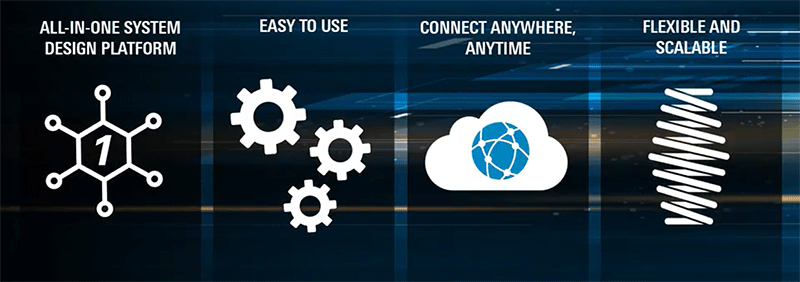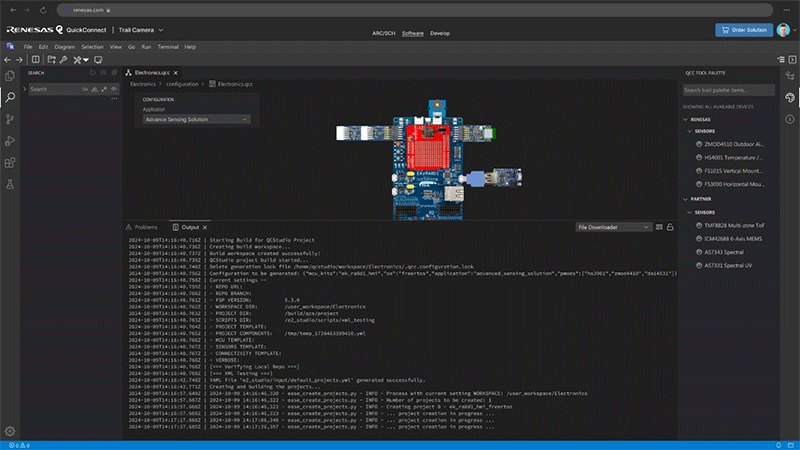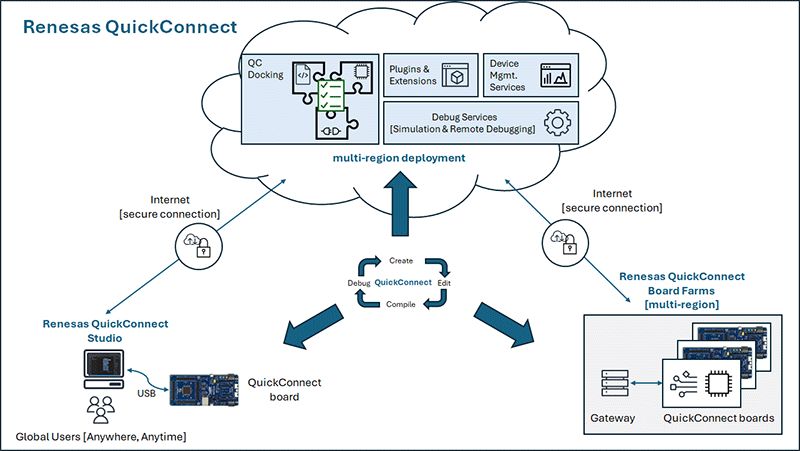Future of Embedded Systems Design: A Look at Hardware-Software Co-Design
In today's technologically advanced world, the lines between hardware and software are blurring. The demand for smarter, more functional devices necessitates a more integrated approach to design. Hardware-software co-design, a concept that first emerged in the 1990s, is finally gaining traction as the way of the future for electronic design. At Renesas, we're committed to empowering developers and product designers to harness the potential of this new paradigm, which is why we're thrilled to offer Renesas QuickConnect—an innovative platform that simplifies integration and accelerates development across our solutions.

Understanding Hardware-Software Co-design
Hardware-software co-design involves the concurrent design of both hardware and software components in complex electronic systems. It leverages the synergy between the two disciplines to optimize design constraints like cost, performance, and power consumption. This approach contrasts with the traditional method of designing hardware first and then developing software to fit the existing platform.
Why Co-Design Matters
The increasing complexity of electronics, fueled by the demand for greater functionality and scalability, demands a co-design approach. As circuits shrink and become denser, co-design becomes crucial in system and IoT architecture design.
Co-Design Offers Numerous Advantages
- Increased Manufacturing Efficiency: Streamlined processes and optimized designs lead to faster production times.
- Accelerated Innovation: The integration of hardware and software expertise fosters creativity and pushes the boundaries of design possibilities.
- Reduced Costs: Design optimization and efficient simulations minimize costly delays and failed designs.
- Faster Time-to-Market: Co-design allows for rapid prototyping and testing, leading to quicker product launches.
The home appliances industry offers a compelling example of how technology is evolving. Appliances that were once simple are now becoming more sophisticated with the integration of smart features like artificial intelligence (AI). These advancements demand a new level of hardware and software integration to support complex functionality while meeting strict cost and power constraints. Co-design plays a crucial role in addressing these challenges by analyzing the interdependencies between hardware and software, ultimately generating optimized solutions. This approach saves significant time and effort for original equipment manufacturers (OEMs) during the design process.
Another example is in the fields of Artificial Intelligence (AI) and Machine Learning (ML) which exemplify the power of co-design by pushing the boundaries of electronic system design to extract maximum performance and power efficiency. AI/ML platforms demand highly specialized optimizations that can only be realized through tight hardware-software integration. Unlike generic hardware paired with generic software, which limits optimization potential, co-design allows for tailoring both components to work together seamlessly. This approach ensures that electronic systems are designed to achieve significant power gains, performance improvements, and greater system responsiveness.
Evolution of Embedded System Design
The integration of hardware-software co-design, enhanced by ML and AI, is poised to revolutionize the Embedded System Design Automation (ESDA) industry. This shift feels like a natural evolution of the Electronic Design Automation (EDA) field. By leveraging a rich knowledge base of proven designs, co-design optimizes both hardware and software simultaneously, ensuring consistent, high-quality results across diverse scenarios.
Moreover, it enables systems to learn from irregularities, continuously improving design efficiency. Co-design also drastically reduces simulation times without sacrificing accuracy, accelerating the development process, and enabling rapid iteration and refinement.
This is the foundation of Renesas QuickConnect, where system developers and architects can leverage the visual WYSIWYG development environment, Renesas QuickConnect Studio, to rapidly transform ideas from concept to a minimum viable product (MVP). By eliminating the need to search for technical documentation, install tools, and configure and build software projects, Renesas QuickConnect streamlines development into an efficient, innovation-focused process.

Effective co-design requires a shift in organizational structure, breaking down barriers between traditionally separate hardware and software teams. Experts in circuit design, hardware, architecture, software development, and data science must collaborate to achieve truly innovative solutions. Companies are increasingly adopting integrated teams to foster communication and collaboration between disciplines. Additionally, the introduction of tools that enhance collaboration among diverse teams is another essential component in supporting co-design. These tools facilitate real-time sharing of insights, streamline workflows, and ensure that hardware and software engineers can work together seamlessly, ultimately driving more cohesive and efficient design outcomes.
A foundational requirement of Renesas QuickConnect was for it to be a cloud-based platform, designed to integrate seamlessly with developers' workflows. This approach enhances collaboration across diverse teams, simplifies idea-sharing, and enables a focused approach to solving complex design challenges.

The Future of Co-Design
The future of electronics design lies in the seamless integration of hardware and software. Co-design is not merely a trend; it is a paradigm shift, a fundamental change in how we approach innovation. As technology advances, co-design will become even more crucial, empowering designers to create increasingly intelligent, efficient, and capable devices.
Renesas Electronics is at the forefront of enabling technologies for the ESDA industry, driving advancements through tools that facilitate hardware-software co-design. One of the standout innovations is Renesas QuickConnect, a platform designed to empower product teams by streamlining the co-design process. Renesas QuickConnect offers modular solutions that integrate both hardware and software, allowing developers to rapidly prototype, test, and deploy complex systems. By enabling seamless collaboration between hardware and software, Renesas QuickConnect accelerates innovation and enhances design efficiency. This cutting-edge solution underscores Renesas' commitment to leading the ESDA space, helping teams across industries harness the power of co-design to shape the future of electronics.
Learn more about Renesas QuickConnect
